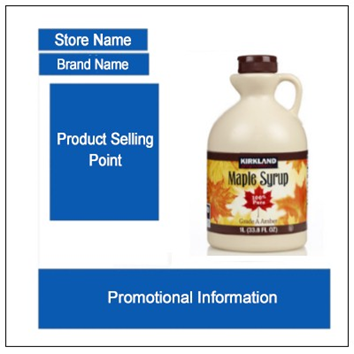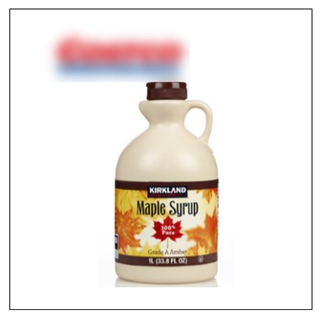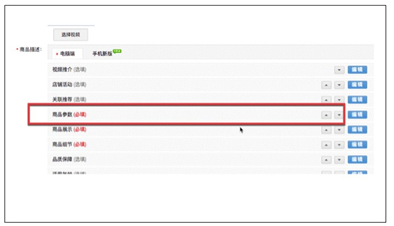Nowadays, the Cross-Border E-Commerce model is becoming more and more popular due to its characteristics such as global forum and instantaneously. Lots of products are imported into China by CBEC. So what are the requirements for advertising? On the one hand, the advertising content should be authentic and not mislead to consumers. On the other hand, platform can make its own specifications. The following is a global food industry standard issued by Tmall for reference.
Preface
This Global Food Industry Standard was specially formulated to improve the overall quality of Tmall Global products in this industry, and better standardize the product launching behavior of merchants.
This standard was formulated by Tmall Global and we reserve the right to interpret and make relevant revisions to this standard.
Tmall Global Food Industry Standards
1. Scope of Application:
This standard specifies launch specifications and quality requirements for foods.
It is applicable to all foods sold on Tmall Global and all items found under the main category.
Main Operating Category | First Tier Categories |
Foods | Snacks/Nuts/Specialties |
Coffee/Cereals/Instant Drinks | |
Tea | |
Alcoholic Drinks | |
Grains, Oils, Rice and Flour/Dry Goods/ Condiments |
2. Product Specifications
2.1 Product Launching Specifications
2.1.1 Caption Publishing Specifications:
2.1.1.1 Food product captions must contain “the brand name + product name + other information”. Each brand can only have one name and it must be approved by Tmall Global as a sub-brand. The name of the product should be a food product name and the English name should be placed in front of the Chinese name with a “/” between the two names, for example, “kirkland/可兰”. In case the brand name is not bilingual, a single version is also permissible. The description of the product itself in the caption must be consistent with the clearly stated contents of the product. Example Case: 1-liter Bottle of Kirkland/可兰Grade-A Maple Syrup
2.1.2 Main Image Publishing Specifications
2.1.2.1 Overall requirements for the main image are as follows:
- There must be 5 pictures of the main image and a physical photograph must be taken of the product. Furthermore, the resolution of each picture must be greater than or equal to 800*800.
- Trademark holders and market type flagship stores can place their brand logo in the top left corner of the main image. The logo's size should fit within this fixed scale: its width should be within four tenths of the image size and its height should be within two tenths of the image size.
2.1.2.2 The specific requirements for displaying contents on those 5 main image pictures are as follows:
- The first picture of the main image must be a physical picture shot of the front of the product, in which information such as the trademark and product name can be seen clearly. - The main search picture should display the main structure of the product with left and right sides, the section on the right side being the main document formulation (merchants can customize the background themselves to fit the atmosphere of the scene);
- The second picture of the main image must be a physical picture shot of the front of the product, in which information such as the trademark and product name can be clearly seen, and product selling points and promotional content are displayed at fixed locations. No other advertising is allowed on this picture. (Non-trademark holders should only put a physical picture of the product)
- The third picture must be a rear view of the product, displaying the nutrition facts label that includes the product name, main ingredients, usage and dosage, unsuitable groups and other information;
- As for the fourth and fifth pictures, under the premise of preserving the brand logo, store name and selling points, the merchant may include a display of product content details, brand endorsements, suitable groups of people, raw materials, place of origin, production process certification standards, a best match display, etc. (it is strictly forbidden to use prohibited words or extreme language).
A reference template for main images is as follows:
The first picture of the main image illustrating product selling points + promotional information:

The second picture:

The third picture: production ingredient information label + enlarged ingredient list

2.1.3 Product Attributes Publishing Specifications:
Correct brand name and product specifications must be properly selected when launching the product. Product attributes filled in the property column must be true and they also must meet the relevant standards of the original sales destination country or region. Product name, ingredient list, storage method, shelf life, method of consumption, place of origin, manufacturer, production address, net contents and specifications.
2.1.4 Product Detail Page Description Specifications
1) A physical picture, in which the product's brand can be clearly seen, must be included in the details description.
2) A Chinese translation copy of the nutrition facts label, whose contents must be consistent with the contents of the nutrition facts label in the physical picture of the product, must be included in the details description.
Specific display locations are as follows:
For PCs: upload the picture to “Product Parameters”.
For mobile devices: upload the Chinese translation copy of the nutrition facts label to “Product Pictures”.
Reference Paths:v

2.2 Food Products Identification and Logo Specifications
The following items should be contained in the label:
2.2.1 Food Name;
2.2.2 Commodity Ingredient List;
2.2.3 Chinese Names and Contents of Main Effectual Ingredients (If they are unable to be identified with existing technologies, then raw materials related to those components should be marked instead);
2.2.4 Stockpiling Method;
2.2.5 Net Contents and Specifications;
2.2.6 Product Features;
2.2.7 Suitable Groups;
2.2.8 Unsuitable Groups;
2.2.9 Suitable Ages:
2.2.10 Method of Consumption and Dosage;
2.2.11 Expiration Date/Shelf Life
2.2.12 Storage Methods;
2.2.13 Allergy Tips
2.2.14 Manufacturer (Self-administered);
2.2.15 Production Address (Self-administered);
2.2.16 Original Sale Destinations (Countries or Regions) (Self-administered);
2.2.17 Warnings;
2.2.18 Other label contents as stipulated by the relevant standards or requirements (self-administered);
2.2.19 Product Quality Specifications
2.3.1 Product quality must meet quality safety standards of its original sales destination country or region as well as Tmall Global quality sampling requirements. If there are other legal or regulatory requirements, these must also be observed. For specific requirements please click download.
2.3.2 Products may not be products previously recalled from the market.
2.3.3 Product Promotion Specifications
Merchants publishing product promotional content in captions, main images and details pages may not do the following:
- Assure or guarantee the efficacy of the product, or make any assertion that the use of this product will bring health.
- Exaggerate the efficacy of the dietary nutritional supplement or expand the range of suitable groups. Express or imply that such products can cure all symptoms or fit all groups.
- Include terminology that may cause people to confuse it with medicine, promote its therapeutic effects directly or indirectly, or express or imply that such products can prevent or cure diseases when promoting the effects of certain elements.
- Compare your products with others or disparage other products.
- Include statements like “money back guarantee,” “XX is insured by insurance companies” and other such content.
- Include commitment statements like “100% efficacy,” “zero risk,” “safe,” “no side effects,” “non-habit-forming” and other commitment statements.
- Employ or present names or images of any state organs or institutions, medical or academic institutions, industry associations, experts, medical staff or consumers to endorse the efficacy of the product.
- Overstate or exaggerate a certain health condition or disease, or make the public worried or even terrified about their health by depicting physical hazards a certain disease may cause them, or mislead the public and convince them that they will suffer from some sort of illnesses or their physical condition will deteriorate if they won’t take your products.
- Employ specialized terminology, mystical language or technical language that is hard for the public to understand to describe the characteristics and functions of your products.
- Employ absolute or exclusive terms and expressions like “state of the art technology,” “the most scientific,” “the most advanced,” “the best” or other such absolute terms and expressions.
- Disparage the goods or services of other manufacturers.
The contents of the product details page published by the merchant need to be accurate. The Chinese version shall prevail in case of any ambiguity between the Chinese version and English version.
2.3.4 Product production and expiration dates should comply with the provisions in Tmall Global Product Launching Specifications.